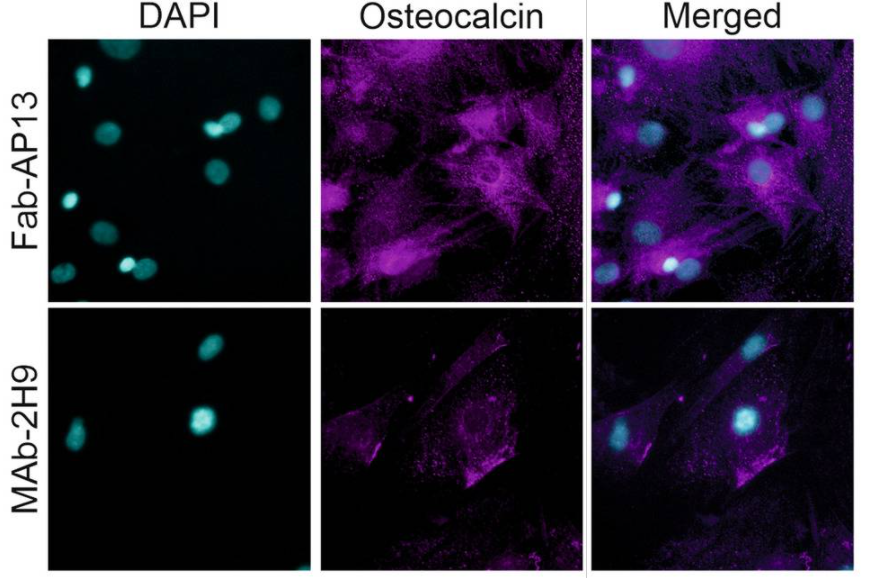Bone is defined as “rigid body tissue consisting of cells embedded in an abundant hard intercellular material”. Historically, its purpose has been considered limited to protecting internal organs and providing structural support to the body. However, research over the past few decades has shown the impact of bone tissue on various physiological pathways through the secretion of specific hormones.
Osteocalcin is one such hormone secreted by osteoblasts within the bone and plays a role in glucose homeostasis, and perhaps also in male fertility, brain development and cognition.
Ximbio spoke to Dr. Kaisa Ivaska-Papaioannou to discover more about her research into osteocalcin:

Osteocalcin
Dr. Kaisa Ivaska-Papaioannou is one of the researchers at the forefront of Osteocalcin research. Since completing her doctoral thesis on bone turnover markers (BTMs) at the University of Turku, Dr. Ivaska-Papaioannou has continued this work to understand the role of Osteocalcin in diseases such as osteoporosis, and in glucose metabolism.
Identifying the role of Osteocalcin in osteoporosis
In one of her research projects Dr. Ivaska-Papaioannou investigated whether bone metabolism evaluated by BTMs was associated with increased risk of fractures. The group discovered elevated level of urinary osteocalcin amongst other BTMs was associated with increased risk of fracture for up to a decade in post-menopausal women.
Understanding the link between glucose and bone metabolism
Osteocalcin regulates glucose tolerance and insulin sensitivity. To corroborate this phenomenon, back in 2014, the group was involved in a study to assess the effect of Osteocalcin within individuals with severe childhood-onset obesity. The results demonstrated that obese individuals within the study had lower concentrations of osteocalcin compared to controls. Osteocalcin was also shown to respond to changes in glucose homeostasis as insulin administration decreased levels of both osteocalcin and its precursor uncarboxylated osteocalcin within a few hours.
Dr. Kaisa Ivaska-Papaioannou’s latest publication focuses on developing antibodies to detect uncarboxylated osteocalcin within human blood samples. A correlation was established between uncarboxylated osteocalcin and plasma glucose, indicating further involvement of osteocalcin in glucose metabolism in humans.

Comparison of novel anti-osteocalcin rAb Fab-13 and established anti-osteocalcin mAb MAb-2H9. This novel research tool is able to target uncarboxylated osteocalcin specifically, while mAb-2H9 targets both carboxylated and uncarboxylated osteocalcin. (Arponen et al, 2020. Calcif Tissue Int.)
Accelerating life science research
Currently Dr. Ivaska-Papaioannou’s focus is to continue to build upon the understanding of interactions between osteoblasts and bone marrow adipocytes in the tissue microenvironment. The group is also investigating the interplay of bone metabolism with the pathophysiological glucose metabolism seen in diabetes.
To enhance her impact on skeletal research, Dr. Kaisa Ivaska-Papaioannou has made the research tools which were developed in her lab available to researchers worldwide, through University of Turku Technology Transfer Office’s partnership with Ximbio.
